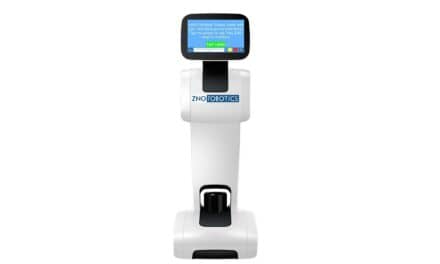Clear aligner treatment continues to grow in popularity worldwide. To date, over 5 million people have been treated with Invisalign® clear aligners and Align Technology Inc has reported revenue of over $1.5 billion with a market capitalization of $29.5 billion. Happily, most patients successfully complete their treatment and are satisfied with their results. Nevertheless, there will always be a percentage of patients who do not attain their desired outcome because they did not comply with the instructions regarding aligner wear. Learning to recognize signs of poor compliance, ranging from obvious to subtle, will help you and your patients have a better treatment experience and outcome. Therefore, drawing from our extensive experience treating patients with aligners, we submit 10 signs of patient non-compliance:
1. Patient comes to appointment without their aligners
It is possible that a patient is perfectly compliant, wearing their aligners 22 hours per day, yet has an instance where they arrive at your office without their current aligner. Perhaps it was only a short trip to the office and they “knew they were getting the next one.” The more likely scenario is the patient is often without their aligner or lost their most recent aligner. Aligner loss is probably much more common than we consider. More than likely, a patient has a new aligner they can move forward to without even making you aware. Throughout treatment, it is helpful to remind patients to save the previously worn aligner to revert to if the current aligner is lost or fitting poorly, instead of moving forward to the next aligner. It is always better to “go backwards” one stage than go a few days without aligners. Also, be suspicious if a patient calls and is forceful about needing to come in sooner than their scheduled appointment; and if you do see them on this basis, make sure your staff clearly stresses on the phone that they must bring their current aligner with them.
2. New aligner fits poorly
Each new aligner in the process should fit smoothly and seamlessly. Aligners that fit poorly are a sign that a case is not tracking well. There are several possible reasons for this, but poor compliance must be suspected as one of them. As you monitor a case, consider that even patients who don’t wear aligners sufficiently might be able to “cram” during the hours and days prior to their visit, by forcing or jamming an aligner in, which can cause the PDL to flex and possibly create a “false positive,” where the teeth “bend” into the aligner but haven’t really physiologically moved into intended positions. In such a circumstance, when the aligner is removed, the teeth can move right back. For this reason, we have seen situations where patients come in wearing an aligner that looks like it fits well, but when the next aligner is tried chairside, it fits poorly. For this reason, at each visit it is smart to assess the fit of the new aligner, having scheduled the visit to sync with the patient’s aligner schedule. Most readers already follow this method, but we suggest raising your antennas if a patient seems reluctant to try a new aligner in front of you, or says on more than one occasion, “I need a few more days with this one.”
3. Sporadic appointments or extend time between visits
In theory, a patient can pause the progress of their case by wearing an aligner at night, and resume full time aligner wear at a later date, and thus be absent from your office for an extended period. This may happen in common scenarios like pregnancy, illness, or relocation. Generally, however, multiple missed appointments or extended time between visits represents a lack of dedication to the process. We accept that aligner treatment of a patient might take a back seat to the various priorities in life, but we often will remind patients that without very good treatment cooperation, it is impossible to attain a very good result. In addition, be alert for patients who have been absent from your office and then call and express a sudden urgent need to be seen immediately.
4. Patients comes in with incorrect aligner
One of the nice aspects of Invisalign treatment is the simplicity of the active treatment visit. It doesn’t add much additional time to have your staff verify that the aligner the patient has worn into the visit is the proper number. If they have already removed the current aligner and perhaps put it in their bag or jacket, consider asking to see it. A patient that comes in with the incorrect aligner might have lost the last aligner, or it is a sign of a patient that is generally disorganized throughout the process.
5. Aligners are too clean/compliance indicator not faded
When the compliance indicator was first introduced into aligners, it was specifically used for the Invisalign Teen product, as both a means to assure parents that compliance could be monitored and also serving as motivation for teens to wear the aligners. While the indicator has not yet evolved into a sophisticated quantifiable measure, a bold blue mark that remains on an aligner is a sign of a brand-new aligner. When the patient removes the worn aligner, take a look and see if the indicator has faded to some degree.
6. Patient’s spouse or parent calls and asks to pick up the next aligner
If a patient cannot come in to receive the next batch of aligners, they can be instructed to remain in the last aligner for at least 12 hours a day until they can come in for an exam. When the call comes from a spouse or parent to “pick up” the next aligner, it often means the patient is without any aligners, or embarrassed to show that the teeth are not tracking due to their own failures. If this is an isolated incident for a patient whose treatment has been going well, you can choose to accept this request and deliver at most one new aligner, but we will often hold firm and insist that we need to monitor how the new aligner fits.
7. Non-tracking of multiple teeth
There are many clinical reasons for non-tracking aligners, including lack of space for a tooth to move, lost or broken attachments, as well as unrealistic ClinCheck® treatment planning with Invisalign treatment. Generally, maxillary lateral incisors and rotated premolars are the most frequent culprits. When a patient presents with aligners that are grossly non-tracking on several if not all teeth, it should raise the non-compliance red flag. The chances of an aligner not tracking in both complete arches are unlikely for a patient who is wearing them properly. For these cases, using chewies won’t get the case back on track and is not advised. An honest, face-to-face conversation with the patient is required to determine the level of compliance. Be aware, however, that patients are reluctant to self-implicate, and refer to #8 below for the subtle key phrases patients use that indicate poor compliance.
8. Learn to read the “tells”
Does the hygienist cleaning your teeth ask you if you floss daily? What is your typical response? Have you ever sugar-coated your answer to avoid embarrassment? Don’t feel bad because it’s normal, and your patients will do the same to you. Like a professional poker player, learn to become a master of human behavior, and learn to recognize the subtle tells that give away deceitful responses. Key phrases such as “I try to wear them,” “I mostly wear them,” or “I wear them when I can” are dead giveaways that the patient is not wearing their aligners as directed. Surprisingly, adults are just as likely to sugarcoat their compliance as teens, and adults are also more inclined to aggressively defend their mistruths. Sometimes, patients use phrases that are not defensive, and more an expression of guilt. “How is the treatment working, did the teeth move the way they are supposed to?” might be a natural question, but sometimes it’s revelatory. “I am so happy, I could almost be happy stopping just the way they look now” might be the patient rationalizing to themselves, out loud.
9. Lack of eye contact
Another type of tell is the subtle body language of lying. Fidgeting, pretending not to hear the question, unusual anger, and lack of eye contact are all hints that the patient is being less than honest.
10. Overly defensive patient and/or parent
A common behavior when lying is to try to deflect the conversation away from the lie. Aggressive responses such as “I have never been spoken to like this,” “You are being so unprofessional,” or the use of profanity, bring about an unpleasant interaction with the patient that most doctors prefer to avoid. In these situations, it is most important to remain calm and steer the conversation back on-topic. Use “I” statements—“I want you to have the best results possible,” “I am concerned that your treatment is off-track,” or “I only want you to have good results”-—can show to the patient that you are empathetic. Asking open ended questions such as “What can I do to help?” can help diffuse an uncomfortable situation, and offering to continue treatment with braces can help to give the patient alternatives to aligner treatment.
Since 99.9% of aligner wear takes place outside of our office, it is impossible to really know for certain how compliant the patient is. Hopefully, this deep dive into the mechanics and psychology of aligner wear will provide some insight that can help you and your patients reach the best possible result. OP
Barry J. Glaser, DMD, received his doctorate in dental medicine from The University of Pennsylvania School of Dental Medicine and earned his Certificate of Advanced Graduate Studies in Orthodontics from Boston University. He served as associate director of orthodontics at Montefiore Medical Center in New York City from 1992 to 1995. He has been in private practice in Cortlandt Manor, NY, since 1994. Glaser was an early adopter of Invisalign Teen and has extensive experience treating teens and adults of all malocclusions with Invisalign.
Adam Goodman, DMD, received his doctorate in dental medicine from The University of Pennsylvania School of Dental Medicine in 1989 and his Orthodontic Specialty Certificate in 1993 at Montefiore Medical Center. He has practiced orthodontics in the New York City area since 1993 and is known as a pioneer, mentor, and educator for Invisalign. He has trained over 1,000 dentists across North America on behalf of Align Technology, and has spoken at several Invisalign Summit meetings, the Greater NY Dental Meeting, and the California State Dental Meeting. He is an assistant attending at Weill Cornell Medical Center in the Oral Surgery Department with a concentration in Pre-Surgical Orthodontics.





